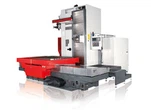The fit between a girth gear and pinion is a critical aspect in the design and operation of gear systems, particularly in heavy-duty machinery such as rotary kilns, ball mills, and other large industrial equipment. The fit determines how well the gear teeth of the girth gear and pinion mesh together, affecting the overall performance and lifespan of the gearing system. Proper gear meshing is crucial for transmitting power efficiently and for ensuring smooth and reliable operation.
several factors to consider when determining the fit between a girth gear and pinion
Tooth Profile and Pressure Angle: The tooth profiles and pressure angles of the gear teeth should match to ensure proper contact and load distribution. Common tooth profiles include involute and cycloidal, and the pressure angle is typically 20 degrees for industrial gears.
Pitch Diameter and Module (or Diametral Pitch): The pitch diameter of the gears and the module (or diametral pitch) must be compatible to achieve the desired gear ratio and proper tooth engagement.
Center Distance: The center distance between the girth gear and pinion should be set according to the design specifications. Proper center distance ensures that the gears mesh correctly without excessive backlash or interference.
Backlash: Backlash is the clearance between the mating teeth when the gears are not in contact. It is essential to have an appropriate amount of backlash to accommodate thermal expansion, lubrication, and manufacturing tolerances.
Alignment: Proper alignment of the girth gear and pinion is critical for minimizing wear, reducing vibrations, and maximizing the efficiency of the gear system. Misalignment can lead to uneven tooth wear and premature failure.
Material and Heat Treatment: The materials used for the gears, as well as their heat treatment, affect their hardness and durability. Matching the material properties ensures that both the girth gear and pinion can withstand the operating conditions and loads.
Lubrication: Adequate lubrication is crucial for reducing friction and wear between the gear teeth. Proper lubrication also helps dissipate heat generated during operation.
Load Distribution: The gear design should ensure uniform load distribution across the teeth to prevent localized wear and tooth damage.
sUMMARY
It's important to note that the fit between a girth gear and pinion is often specified by engineering standards and guidelines relevant to the specific application and industry. Professional engineers and gear designers typically follow these standards to ensure the reliable and efficient operation of gear systems.








